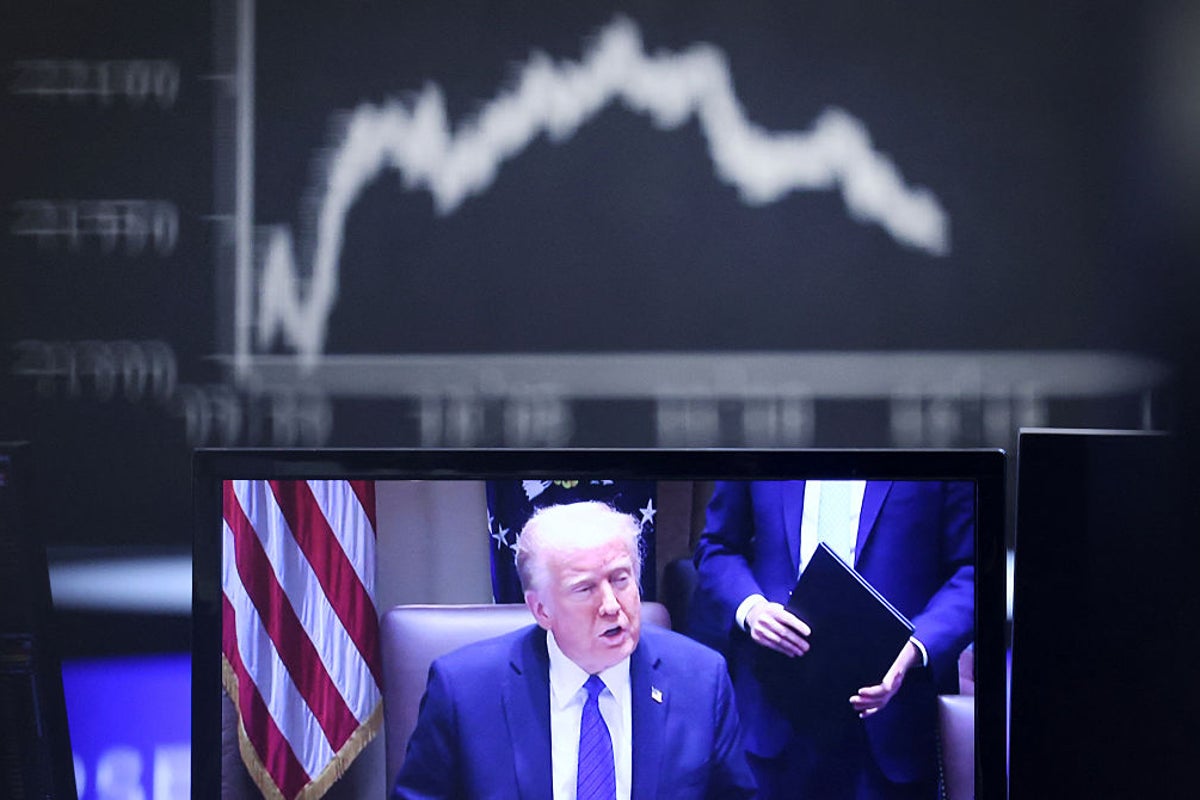
Unless you happen to be an investor or trader who had shorted a lot of stocks prior to this week, it probably hasn’t been an enjoyable experience watching some of the biggest and most well-known companies on the planet tumble ever-deeper into the red.
By the close of play in the US on Thursday, President Donald Trump’s previous-day announcement of global tariffs had wiped just shy of an estimated $2.5 trillion, or £1.9tn, off the total value of US stock markets in the space of a few hours.
For what is essentially a play at making his nation richer for the long term, it was quite the impact in the opposite direction – but Mr Trump remains steadfast in his beliefs that a longer-term gain will be made from his ploy of alienating most of the rest of the planet in business terms.
That’s $2.5tn… and counting
On Thursday, the S&P 500 fell a total 4.8 per cent – that equated to a total market value wipeout of $2.48tn, the Financial Times calculated. That’s not the end of the tough-to-read numbers though, with the Dow Industrial index dropping almost four per cent and the Nasdaq dropping very close to six per cent.
The Nasdaq 100 is notoriously tech focused, making it almost a proxy for how quickly or how far modern businesses progress and enrich their shareholders – or the countries they pay taxes to – and on Thursday that particular index lost out to the tune of $1.4tn (£1.08tn), Bloomberg estimate. While it’s important to note that’s not an additional trillion on top of the two already mentioned – there’s overlap of companies across indices – it’s still indicative of the pressures that White House policy will come under if the bleeding isn’t stemmed soon.
Chip-related companies fell almost ten per cent as a group. Amazon lost almost $200bn (£154bn) in market capitalisation value alone. The Vix index, also known as the fear index, has risen 60 per cent in under a week, highlighting the prospect of greater volatility ahead.
And the sell-off is far from done as futures are showed in pre-trading on Friday: hours ahead of the New York Stock Exchange opening, Amazon was signalling another 1.3 per cent drop, Tesla one per cent, Apple one per cent.
By two hours into Friday trading, the S&P 500 was down another 3.5 per cent, with Amazon down to the tune of two per cent, Apple broaching a four per cent loss and Tesla a full 8.67 per cent in the red.
These are just big-name companies in the public consciousness but non-tech-related corporations haven’t been spared.
Disney? Down nine per cent yesterday and more than three per cent by Friday 4pm BST. Oil giant Exxon Mobil? 5.2 per cent drop Thursday, four per cent mid-Friday. And Nike took a 14 per cent hit on the Thursday – but after an initial dip Friday staged a mid-session recovery, four per cent up as perhaps some investors eyed up a price weakness opportunity.
Thursday was the biggest single-day drop since Covid and it clearly isn’t finished yet.
The wider world didn’t escape
Of course, given the tariffs were placed on other countries, it doesn’t mean this was an America-only issue.
Share prices were jumpy across the globe even before the announcement, given the uncertainty it created, but the scale of them meant big hits in Asia, Europe and the UK – the latter two at least partially mitigated by the fact the likes of the FTSE 100 and the DAX in Germany had climbed well earlier in the year.
“The markets are going to boom. The stock is going to boom. The country is going to boom. And the rest of the world wants to see is there any way they can make a deal,” CNBC report Trump saying.
Perhaps that’s the case – in fact, given decades of stock market history, it’s almost certainly the case.
The more pertinent question is whether they’ll do so on his watch, under these plans, or if some other catalyst for recovery is required.
“Investors looking to buy on the dip were spoiled for choice given the sharp declines seen on the market this week. It’s now a question of when investors feel brave enough to go shopping. Today’s extended sell-off implies they are still too nervous to take the plunge,” noted Russ Mould of AJ Bell.
Why Apple was among the biggest losers
One additional company to note: Apple fell 9.25 per cent in total on Thursday. The most valuable public listed company on the planet in market capitalisation terms lost out to the tune of £310bn (£240bn) or so.
The reasons why are obviously multi-layered, but a big portion of the reason is the tariffs applied to countries where they receive parts and materials from, in particular China. They had initiated a move in production to nearby nations, including Vietnam, but a 46 per cent tariff applies there too.
Clearly, maintaining business in the same way would make Apple products prohibitively expensive, so the threat of lost sales impacts share price immediately.
An analysis by Wedbush analyst Dan Ives, reported by Yahoo Finance, suggested it would take Apple three years and $30bn (£23bn) to switch just a tenth of its supply chain to the US from Asia.
The Trump administration confirmed there was no carve-out to the rules for Apple.
Beyond the stocks
The stock market is widely used as an indicator of economic health and business growth of course, but it’s not the only thing that matters – and unfortunately for the US, many of the other markers are pointing negatively right now.
Measured against the pound, the dollar is a lot weaker now then even a few weeks ago: on 20 January £1 bought $1.21 (1.2171 to be precise); on Thursday it topped $1.31 for a spell, before pulling back to around $1.2990.
Fawad Razaqzada, market analyst at City Index, pointed out the selling went beyond shares in corporate America.
“As indices remained rooted in the bottom and the US dollar suffered a broad-based slump, it is clear that market sentiment is fragile, and this might not be the end of the selling. Even gold, often a safe haven, could not escape the selling pressure, reinforcing fears that rising tariffs could spell trouble across asset classes. Indeed, crude oil was even lower,” he said.
Higher inflation appears a near-certainty.
US stagflation is now a real concern for some economists and JP Morgan foresee a 60 per cent chance of global recession if the tariffs stick.
And more pain of lost income for businesses could be seen in the coming months.
“During a wave of uncertainty, one thing is evident—Trump’s policies and pronouncements have produced a negative sentiment shift toward the US among international travelers. The correlating decline in international travel to the US is expected to be strongest in 2025, with persisting degrees of impact throughout the remainder of Trump’s second term,” explained a report – highlighting an expected fall of 9.4 per cent in international visitors to the States.
In monetary terms, Oxford Economics expect that to translate to a further loss of $9bn (£6.9bn) in the remainder of 2025.
Trump may have a grand plan to return the States to a more balanced, self-sufficient and thriving economy, but it needs a lot of pieces to fall into place to be the case. The start of that process has been painful indeed, with no immediate end in sight.
Source: independent.co.uk


